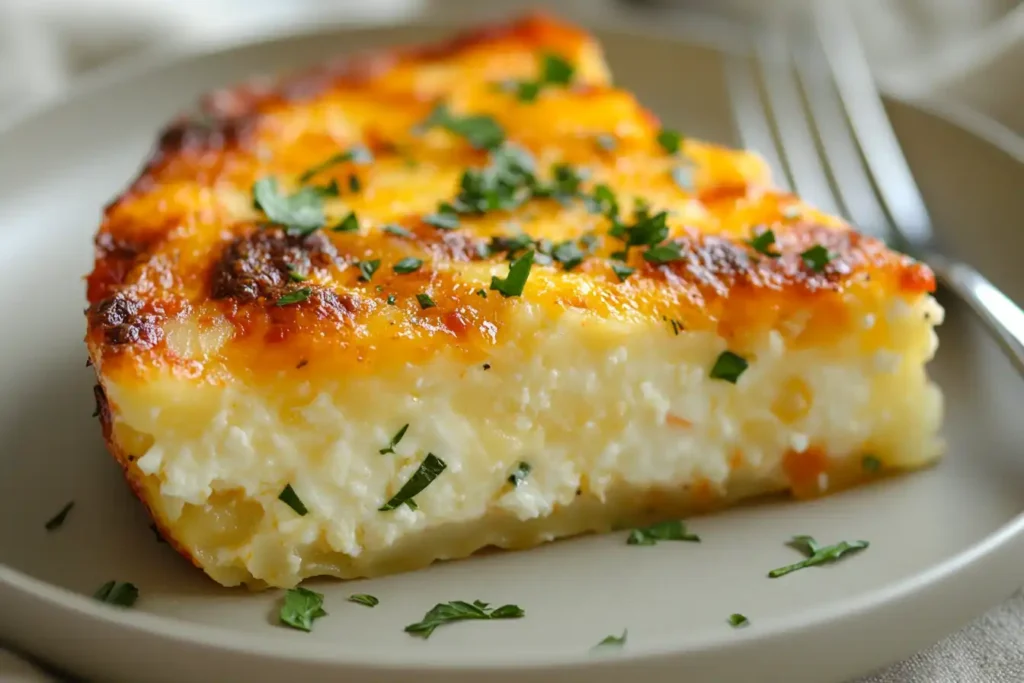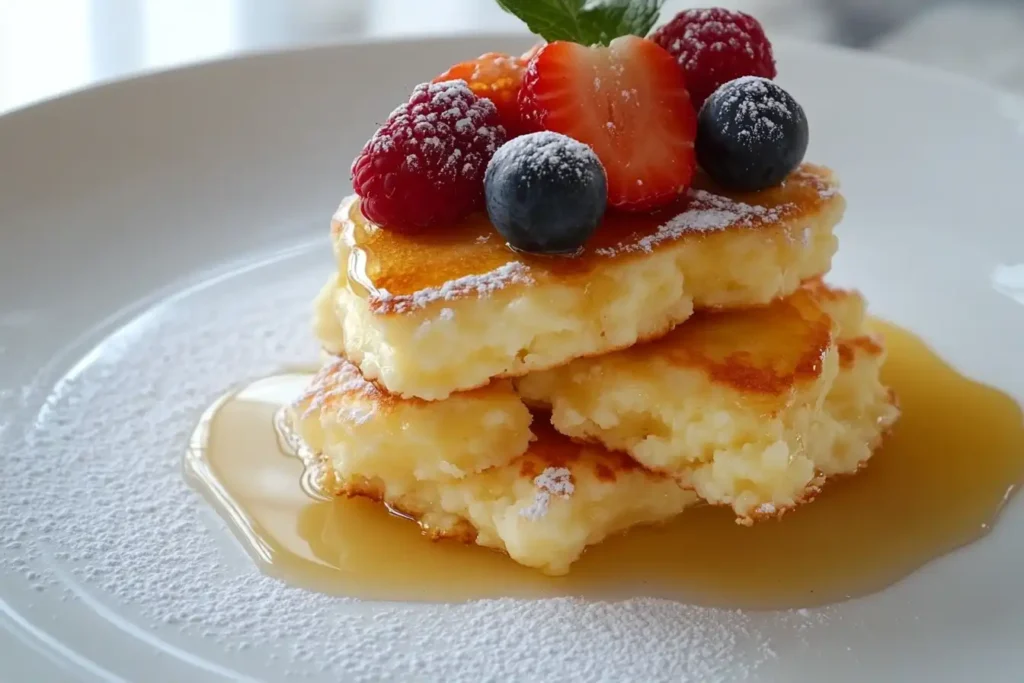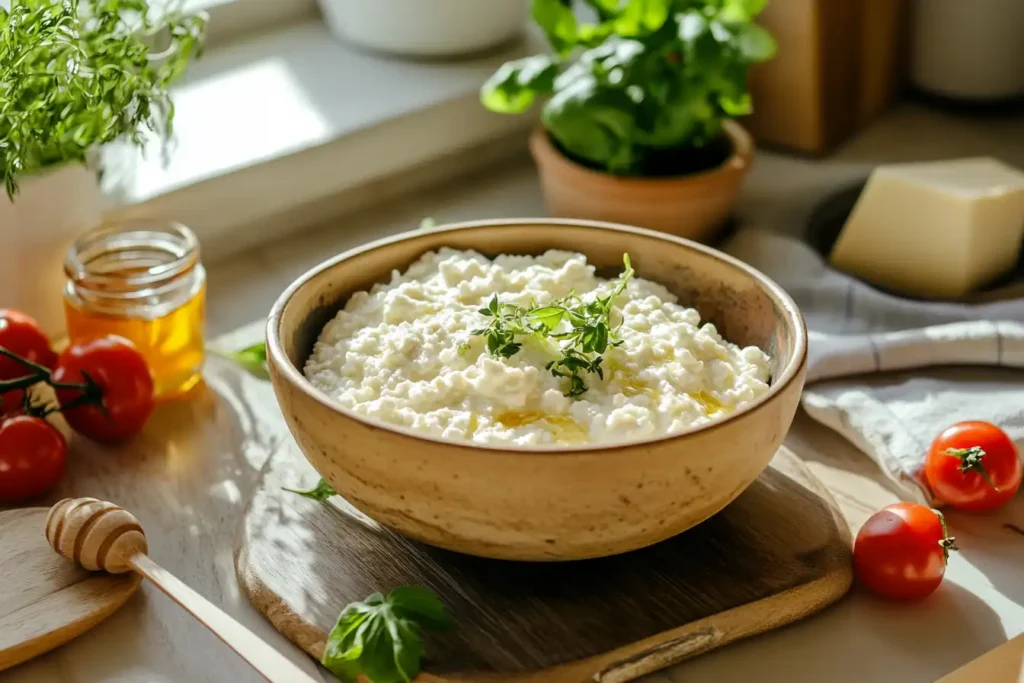Cooking cottage cheese transforms its flavor and texture in fascinating ways, turning a mild, creamy ingredient into something richer and more versatile. From savory dishes to sweet treats, cooked cottage cheese offers countless culinary possibilities. This article dives deep into what cottage cheese tastes like when cooked, exploring its flavor profile, texture, and popular uses in cooking. We’ll also cover its nutritional benefits and answer frequently asked questions. Whether you’re a fan of cottage cheese or a curious foodie, this guide has something for everyone.
Introduction to Cottage Cheese
What is Cottage Cheese?
Cottage cheese is a fresh cheese made from the curds of milk. Unlike aged cheeses like cheddar or parmesan, it is known for its soft, lumpy texture and mild, slightly tangy flavor. Often described as a mix between ricotta and yogurt, its versatility allows it to fit seamlessly into a variety of diets and recipes. With its high protein content and low-calorie profile, it’s a favorite among health-conscious eaters looking for nutritious yet satisfying options.
Whether eaten on its own, paired with fruits or vegetables, or incorporated into dishes, cottage cheese adapts beautifully to both sweet and savory applications, making it a staple in many kitchens worldwide.
How is Cottage Cheese Made?
Cottage cheese is made through a simple process of curdling milk. The milk is gently heated and combined with an acid such as vinegar, lemon juice, or rennet, which causes it to separate into curds (solid parts) and whey (liquid). The curds are then drained, leaving behind the soft, moist texture that defines cottage cheese.
Some versions include a touch of cream for added richness, while others remain plain for a more neutral flavor. Homemade cottage cheese is also popular, as it allows for customization of texture and taste. This straightforward preparation process ensures that cottage cheese retains its fresh and wholesome quality.
Why Cottage Cheese is Unique Compared to Other Cheeses
What sets cottage cheese apart is its fresh, delicate nature. Unlike aged cheeses, which develop bold flavors over time, cottage cheese maintains a light and subtle profile. Its high moisture content makes it soft and refreshing, while its mild taste ensures it complements a wide range of ingredients without overpowering them.
Its versatility is another defining feature. Cottage cheese works just as well in a fruit parfait as it does in a savory lasagna. It also offers a nutritional advantage, being rich in protein, calcium, and essential vitamins, while remaining low in calories and fat. This makes it a valuable ingredient for those seeking a healthy, balanced diet.
The Taste of Cooked Cottage Cheese
What Happens to Cottage Cheese When You Cook It?
When cottage cheese is cooked, its texture and flavor undergo noticeable changes. The once soft, lumpy curds melt slightly, creating a creamier and smoother consistency. Depending on the dish, it might become slightly firmer or even develop a golden crust when baked. Cooking cottage cheese can bring out its natural sweetness, especially in baked goods or casseroles, but it also blends well with savory ingredients.
For example, when used in dishes like lasagna or baked pasta, cottage cheese mimics ricotta by providing a creamy layer that complements bold flavors like marinara sauce or sautéed vegetables.
How Cooking Changes the Taste and Texture
One of the most exciting aspects of cooking cottage cheese is its transformation. While raw cottage cheese has a mild, tangy flavor, cooking intensifies its richness. The slight saltiness becomes more pronounced, and the texture smoothens, making it an ideal ingredient for both savory and sweet recipes.
When grilled or baked, the curds lose some of their moisture, creating a delightful contrast between creamy and chewy textures. This change is why cooked cottage cheese pairs perfectly with crisp veggies in casseroles or as a gooey topping for pizza.
Examples of Popular Cooked Cottage Cheese Dishes

There’s no shortage of delicious dishes that feature cooked cottage cheese. Some popular choices include:
- Cottage Cheese Pancakes: A protein-packed breakfast that’s fluffy yet filling.
- Baked Ziti with Cottage Cheese: A healthier twist on traditional ricotta-filled pasta.
- Cottage Cheese and Herb Dip: Roasting the cheese with fresh herbs creates a flavorful spread.
Describing the Taste of Cooked Cottage Cheese
How Would You Describe the Taste of Cooked Cottage Cheese?
The flavor of cooked cottage cheese is both subtle and versatile. When cooked, its tangy notes mellow, allowing the surrounding ingredients to shine. In savory dishes, it absorbs spices and seasonings, becoming a flavor-packed addition. In sweet recipes, its slight creaminess complements fruits, nuts, and syrups, making it a favorite in desserts like cheesecakes and pastries.
Cooked cottage cheese is often likened to ricotta or mascarpone for its mild, creamy taste, but with a touch of chewiness that sets it apart.
Comparison of Raw vs. Cooked Cottage Cheese Flavor
Raw cottage cheese is known for its tangy, slightly salty flavor and lumpy texture. In contrast, cooked cottage cheese offers a creamier, smoother profile. The cooking process enhances its umami notes, making it a better fit for savory dishes like stuffed bell peppers or casseroles.
The transformation is similar to how ricotta or feta might change when baked, yet cottage cheese retains a unique softness even after cooking.
Common Compliments and Complaints About Its Taste
Cottage cheese lovers often rave about its versatility and ability to elevate simple dishes into hearty meals. However, critics sometimes mention its distinct texture when raw, though this is rarely an issue when cooked.
Those who appreciate its cooked version often highlight its ability to bind ingredients seamlessly without overpowering the dish. This creates a perfect balance of flavor and function, making it an ideal choice for a wide range of recipes.
Uses of Cottage Cheese in Cooking
Can You Use Cottage Cheese for Cooking?
Absolutely! Cottage cheese isn’t just for snacking; it’s a culinary powerhouse that works beautifully in both savory and sweet dishes. Its mild taste and creamy texture make it a flexible ingredient that can adapt to nearly any recipe. Whether you’re making pancakes, casseroles, or desserts, cottage cheese can elevate the dish while adding nutritional benefits.
One of the reasons cottage cheese shines in cooking is its ability to blend well with other ingredients. Moreover, its mild flavor ensures it can enhance dishes without overpowering them, making it a versatile addition to both sweet and savory recipes.
Savory Recipes with Cooked Cottage Cheese
When it comes to savory dishes, cottage cheese is a star ingredient. It’s often used as a substitute for ricotta in recipes like lasagna or stuffed shells, where its creamy texture complements robust flavors. Here are a few popular savory applications:
- Cottage Cheese Spinach Pie: A flaky crust filled with seasoned spinach and cottage cheese.
- Stuffed Bell Peppers: Adding cooked cottage cheese creates a creamy, flavorful filling.
- Cottage Cheese Scramble: Mix it into scrambled eggs for extra creaminess and protein.
Sweet Applications in Desserts and Snacks

Cottage cheese is equally at home in desserts. Its subtle tang pairs perfectly with fruits, honey, and nuts. Here are a few sweet dishes to try:
- Cottage Cheese Cheesecake: A lighter alternative to traditional cheesecakes.
- Cottage Cheese Pancakes: A breakfast treat that’s both nutritious and indulgent.
- Fruit and Cottage Cheese Parfait: Layer it with fresh berries and granola for a quick snack.
Adding cottage cheese to baked goods like muffins or pancakes gives them a moist, tender crumb.
Fusion Dishes Featuring Cottage Cheese
For a twist, try using cottage cheese in fusion dishes. For instance, add it to curries for a creamy base, enhancing the dish’s richness and texture. Alternatively, use it as a topping for tacos to bring a unique, creamy element to the dish. This versatility, therefore, makes cottage cheese perfect for experimenting with global flavors and elevating everyday meals.
Nutritional Aspects of Cooked Cottage Cheese
Does Cooking Affect the Nutritional Value?
Cooking cottage cheese slightly alters its texture and flavor but has minimal impact on its nutritional value. Cottage cheese is naturally high in protein, calcium, and vitamins. While some probiotics may diminish when heated, the protein and mineral content remain intact, making it a nutritious choice even when cooked.
This makes it a great addition to healthy meals, particularly for those aiming to boost their protein intake.
Nutritional Content of Cottage Cheese (Per 100g)
Below is a detailed nutritional breakdown of cottage cheese per 100 grams, highlighting its health benefits:
| Nutrient | Amount (per 100g) |
|---|---|
| Calories | 98 kcal |
| Protein | 11 g |
| Total Fat | 4.3 g |
| Saturated Fat | 1.7 g |
| Cholesterol | 17 mg |
| Carbohydrates | 3.4 g |
| Sugars | 2.7 g |
| Sodium | 364 mg |
| Calcium | 83 mg |
| Potassium | 104 mg |
This table demonstrates why cottage cheese is a popular choice for those looking to maintain a balanced diet. Its high protein content is especially appealing to athletes, weight-watchers, and health enthusiasts.
Is Cottage Cheese Still a Healthy Option When Cooked?
Yes, cooking doesn’t diminish the health benefits of cottage cheese. It retains its high protein and calcium levels, which contribute to muscle health and bone strength. Using it as a substitute for higher-fat ingredients like cream can make your recipes both lighter and more nutritious.
Probiotics and Cooking: What Changes?
One thing to note is that the probiotics in cottage cheese, which promote gut health, may not survive the cooking process. If retaining probiotics is important to you, consider using it in recipes that don’t require high heat, such as dips or spreads.
FAQs About Cooked Cottage Cheese
What Happens to Cottage Cheese When You Cook It?
When cottage cheese is cooked, its flavor and texture transform significantly. The curds soften, becoming creamier, and its tangy taste mellows. In dishes like baked casseroles, it blends seamlessly with other ingredients, creating a rich and satisfying texture. This adaptability is why so many ask, what does cottage cheese taste like cooked? It takes on the flavors of accompanying ingredients while adding its creamy, mild essence.
For inspiration, check out this guide to what to add to macaroni and cheese to make it taste better for ideas that could include cottage cheese as a twist.
Can You Melt Cottage Cheese Like Other Cheeses?
Cottage cheese doesn’t melt the way hard cheeses like cheddar or mozzarella do. Instead, its curds soften and integrate into recipes, providing a creamy texture without becoming stringy or gooey. This transformation answers the question what does cottage cheese taste like cooked? Its unique texture makes it an excellent option for creamy dishes such as baked ziti or vegetable gratins.
For more cheesy ideas, explore the best two cheeses for mac and cheese.
What Are Some Beginner-Friendly Recipes Using Cooked Cottage Cheese?
If you’re new to cooking with cottage cheese, start with these easy and delicious recipes:
- Cottage Cheese Pancakes: Light, fluffy, and packed with protein.
- Vegetable Casserole: Combine cottage cheese with seasonal veggies and bake.
- Baked Pasta: Use it as a substitute for ricotta in lasagna or stuffed shells.
Looking for something unique? Check out the churro cheesecake recipe for a dessert that can incorporate cottage cheese.
How Long Does Cooked Cottage Cheese Last?
Once cooked, cottage cheese should be refrigerated in an airtight container. It typically remains fresh for up to 3 days. To reheat, do so gently to preserve its creamy texture and flavor.
Conclusion and Cooking Tips
Key Takeaways About Cooking with Cottage Cheese
Cottage cheese is an incredibly versatile ingredient that shines in both savory and sweet recipes. From fluffy pancakes to rich casseroles, its mild flavor and creamy texture make it a favorite among cooks. Additionally, cooking it enhances its appeal by adding depth to its flavor and improving its texture. As a result, understanding what cottage cheese tastes like cooked can inspire you to use it more creatively in the kitchen.
For more ways to incorporate cottage cheese, explore the best ways to eat cottage cheese.
Tips for Enhancing the Flavor When Cooking Cottage Cheese
Maximize the flavor and texture of cooked cottage cheese with these tips:
- Pair it with bold flavors: Use garlic, herbs, or spices to complement its mild taste.
- Choose the right cooking method: Baking enhances creaminess, while grilling adds a slightly firm texture.
- Add it to balanced dishes: Combine it with vegetables, grains, or lean proteins for a complete meal.
For inspiration on combining flavors, consider exploring the best cheese combinations for dishes.
Final Word
Cottage cheese is often underestimated; however, its ability to transform into a creamy, flavorful ingredient when cooked makes it a standout choice. Whether you’re cooking up a hearty breakfast, a satisfying dinner, or a sweet treat, cottage cheese undoubtedly deserves a place in your repertoire. By experimenting with it in your favorite dishes, you can discover why so many food enthusiasts are exploring what cottage cheese tastes like cooked. With its unique texture, rich flavor, and exceptional versatility, it might just become your new go-to ingredient for elevating everyday meals.


1 thought on “What Does Cottage Cheese Taste Like Cooked? A Flavorful Guide”